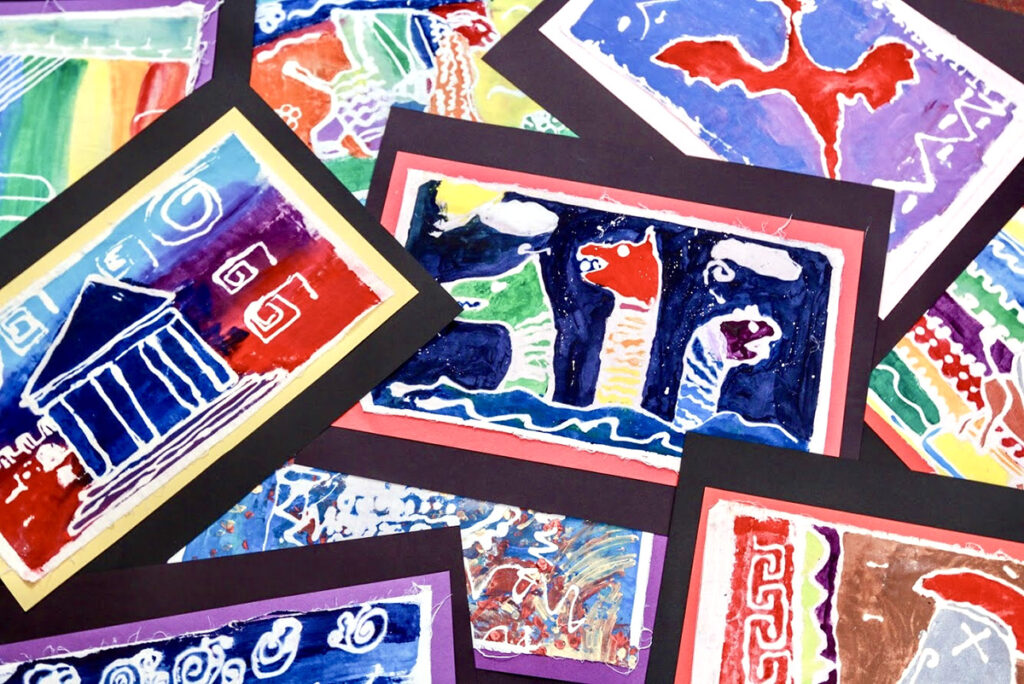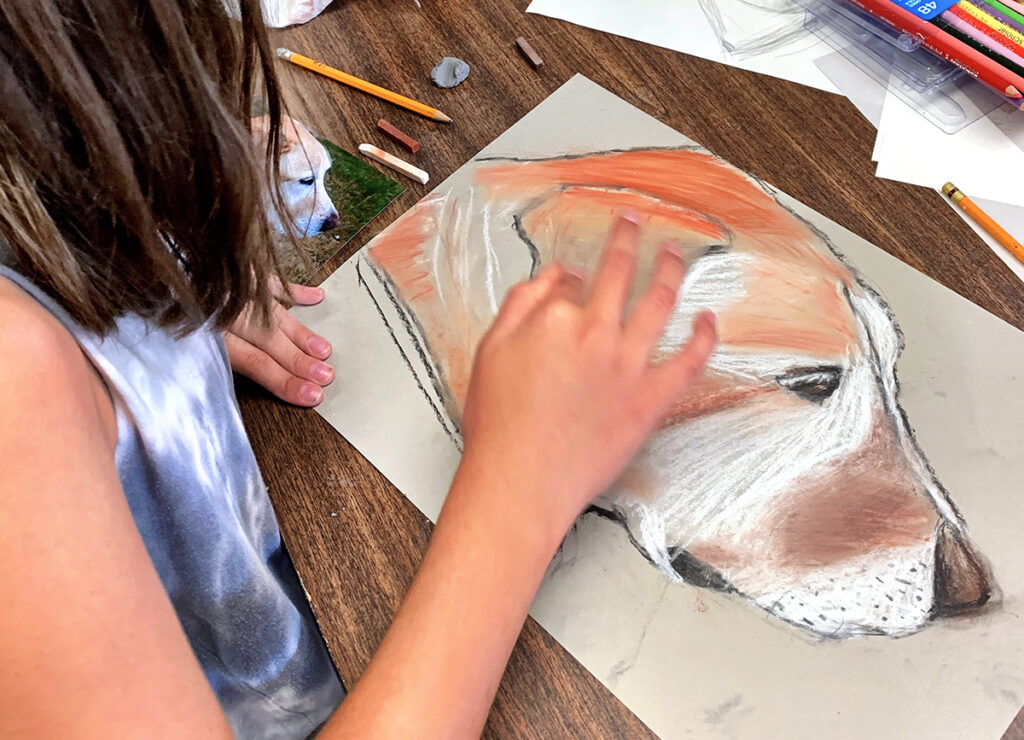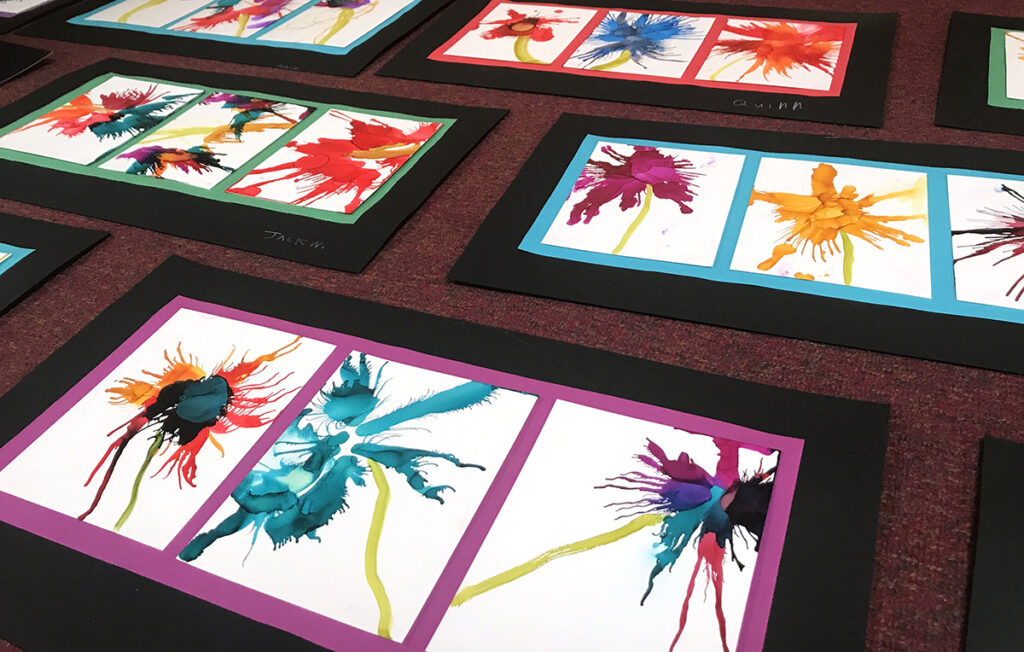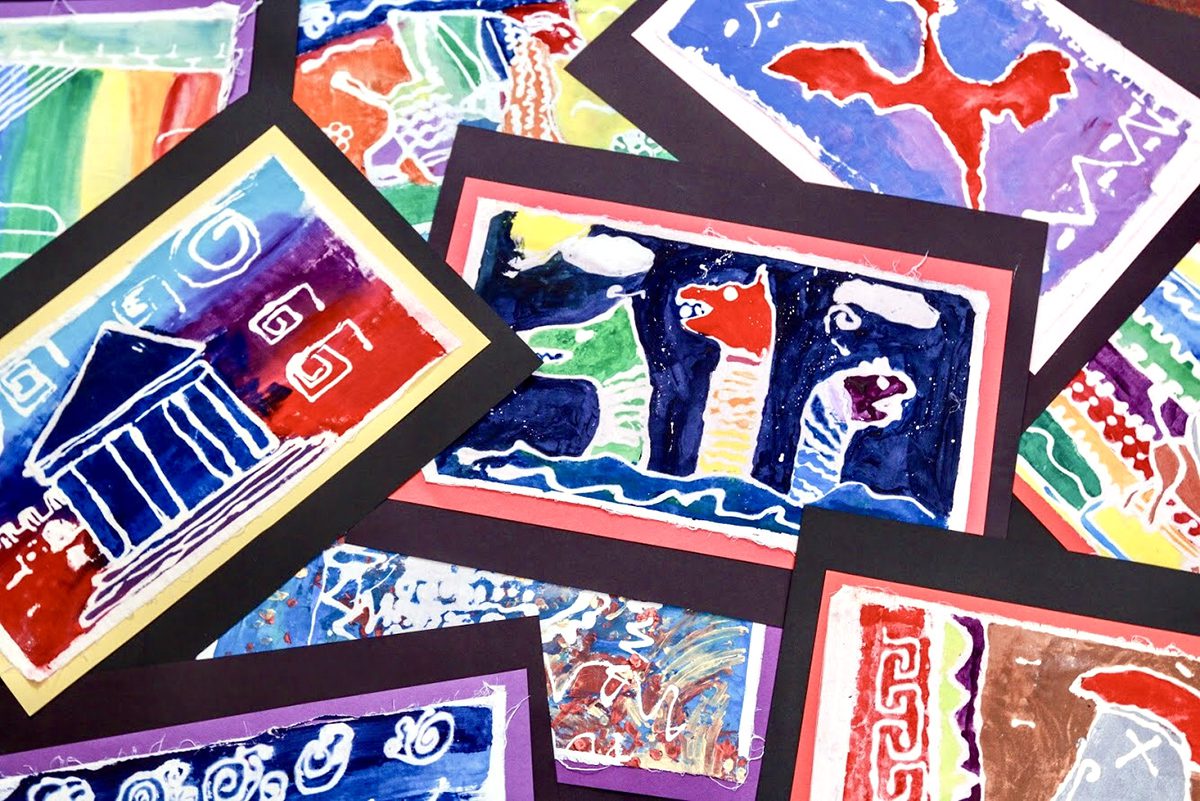It’s July. You have a few more weeks until summer break is over and then you are right back in the classroom. It feels like summer is running out and here you are, stuck teaching summer school or running an art camp. You are afraid of burning out. How can these possibly refuel your teaching?
Lisa Garrett and Carissa Zill are high school and middle school art teachers respectively, in the suburbs of Chicago, IL. They partner to bring an art camp called Artapalooza to their community. Today they share why they love running their art camp during their off-time and how they push through the discouragement and fatigue.
Are you feeling like you are running on empty and it’s time to refuel?
Garrett and Zill keep themselves busy teaching full-time during the school year. They also provide workshops during holiday and spring breaks. On top of all that, Garrett and Zill plan and implement an art summer camp. It works out well because many parents are looking for an activity while they are at work. There is also nothing better than fostering creativity.
Do these two full-time teachers ever feel burnt out? “Sometimes, especially when it’s January and parents start emailing for dates of our summer camps and we’re over here like, ‘I’m trying to figure out what I’m teaching TOMORROW!’ ” Zill admits.
Despite the short seasons of burnout, Zill and Garrett have figured out a few tips that have helped with sustainability over the years. Some of the tips need to be intentionally built-in, whereas some of the rewards that push them forward have come as a result of their hard work.

Read on for nine reenergizing ways to shift your perspective.
1. It’s all about balance and giving yourself a break.
This requires strategy. Spread out your schedule to take a vacation or spend a day doing nothing. It is important to have downtime where you aren’t thinking about teaching or art. This includes the school year too! Use your leave to take mental health days.
2. Working as a team is essential.
Garrett says, “We are a partnership. When one of us is dragging or overwhelmed, the other can pick up the slack.” Teamwork is important from both a logistical and growth perspective.
If you are the only art teacher at your school, you are probably craving collaboration. Working with another art teacher can help you push your thinking and give you that much-needed support. “Since we run the program together, we are always there to bounce ideas off each other, talk through challenges. We make each other better,” Zill shares.
3. Teaching new students from different backgrounds and locations brings a refreshing perspective.
During the school year, students can be placed in your course because it’s required, but students who sign up for your camp all want to be there. You will also be able to interact with and impact students that may not go to your school.

4. It’s beyond rewarding to watch your students grow up with you!
You can foster quite the community of repeat artists when offering courses and camps geared for elementary through high school.
Zill recalls a few long-haulers who stand out. “Molly joined our classes in our second year and is completing her first year of being a certified art teacher in a high school in Chicago. She volunteered for us in high school and we hired her after a few summers. Another student, Micaela, was one of Lisa’s high school students who started working for us in high school as an assistant. She also just completed her first year of teaching middle school art!”
5. You are supplementing your teaching salary and getting paid to do what you love.
The pair met in graduate school when they were both working as substitute teachers. Finding a job as an art teacher right out of school can be hard to come by in our competitive market. Garret and Zill recall they were both looking for ways to make ends meet. “We were brainstorming ways to gain experience and make some money. Thirteen years later, our camp is sought after and often sells out.”
Running your own business is a great way to complement your income. While you might not start off making a ton of money, having one go-to extra job can help lessen the burden. Zill laughs, “When we started Artapalooza I was working three jobs and raising a toddler, so this is a walk in the park!”
6. It’s a low-pressure way to test run lessons.
Art camp provides a fun space to try out those lessons before they hit the classroom. When you run a three-hour class without the worry of the bell, there’s more wiggle room for play. And if they don’t quite work out, it’s low pressure because there are no observations or administrators checking in.
“I remember the year we cast plaster hands,” Zill recalls. “I had the brilliant idea to add tempera paint to the plaster so we could color them… brilliant idea, right?! Except it affected the drying and strength of the plaster and fingers were literally falling off left and right. We laughed, we cried, maybe we still have nightmares… but we pushed through it, used a lot of glue, recast some hands and moved on.”

7. Now is the perfect time to explore and have fun with more complex media.
Just like it’s hard to test run lessons during the school year, it can also be difficult to try new or complex mediums. Maybe you have time constraints with your class periods or it doesn’t fit into your curricular scope and sequence. Art camp is a great venue to investigate fused glass, screen printing, or mono-printing!
8. Planning camp lessons challenges and informs school lesson planning.
It’s not all fun and games, though. Even though camp is more informal, you still have to plan and prepare. Zill shares their growing pains and learning curve. “We’ve gotten better at designing projects that can span such a large age group, timing what projects to lead with on which days, how far to push kids, and how to maximize the wow factor, while also teaching important problem-solving skills and using imagination.”
Camp lessons also need differentiation. If you offer classes to a wide range of ages, it can be tricky to make sure a lesson is appropriate for all. This is a great time to learn how to support all learners, manage materials for any age, and prepare for more advanced lessons. “We learn with every camp—timing, supply dispersal, idea generation, scaffolding projects for a range of learners,” Zill states. “It all helps us in the classroom.”
9. Remember where you started and give it time.
Starting up a business doesn’t happen overnight. Zill states, “Our first session was a bit pitiful—we had 7 students; 4 were children of friends. Word spread and by our third session at the end of the summer we had 20 kids in class.” More often than not, their sessions sell out quickly. At a time when arts advocacy is so essential, Garrett reminds us how our communities crave these creative outlets,
“Challenging creative art camps are such a vital offering as an extracurricular option for kids and are hard to find in many areas. There are so many unique benefits: practice in creative idea generation and problem-solving skills, exposure to art history and multicultural art, and a place where all students can find a level of success and pride in self-expression.”
After all, isn’t this exactly why we love to teach? Be patient with the growth of your camp and be confident that there is a need for the arts in every community.
After a wacky year of teaching with masks and social distancing while also navigating hybrid, distance, and in-person learning—you are probably still recovering. You are cringing at the extra work that art camps and workshops bring. However, you will find there are many rewards that can help you refuel for the school year. Find a partner in crime to collaborate with and complement your energy. Look for a wide range of ages to keep you on your toes. Plan out those lessons that you have always wanted to try in the classroom. And most of all, have fun! You might even make some extra cash!
Have you ever thought about starting an art camp? If so, what has stopped you from making it happen?
What projects or mediums do you wish you could try out but are unable to during the schoolyear?
What are your favorite ways to refuel and make some extra cash over the summer?
Magazine articles and podcasts are opinions of professional education contributors and do not necessarily represent the position of the Art of Education University (AOEU) or its academic offerings. Contributors use terms in the way they are most often talked about in the scope of their educational experiences.





